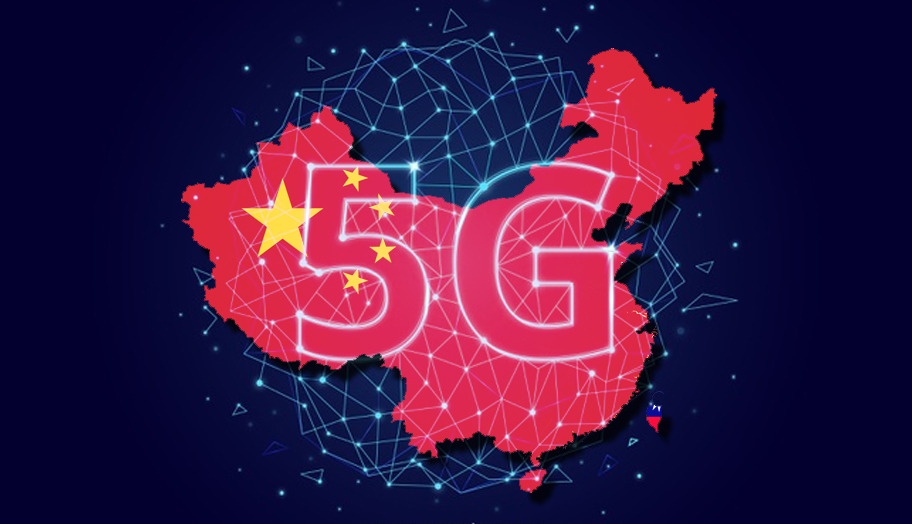
This will make the data of individuals, groups or even security agencies at risk. By deploy ing the 5G in India without indigenisation of technology will make India vulnerable to China. In the first three quarters of 2020, Huawei's market share topped the global 5G communications equipment market and reached 32.8 percent of world's total, according to Dell'Oro, a market research firm. With 5G, China has been eyeing the opportunity to be a leading technology innovator, after its diversion from the global network norms in the 3G and 4G mobile. Fourth, the threat to national security: China is preparing to dominate the world by rolling out its 5G technology warfare across countries. The company has also taken the lead in 6G research and development. China has launched more than 1.3 million 5G base stations so far amid the countrys efforts at expanding its 5G network coverage, according to the Chinas Ministry of Industry and Information Technology (MIIT). As a 5G technology bellwether, Chinese tech giant Huawei has made further progress, saying it will launch its 6G networks in 2030, which is 50 times faster than 5G. This infrastructure will basically cover Chinese urban areas and townships, propelling the nation's core competitiveness in innovations.Ĭhina has taken the lead in the world's 5G network rollout. In an action plan released in March, the MIIT said that China will strive to complete construction of "dual-gigabit" networks that feature both wired and wireless gigabit broadband by 2023.

The next-generation network will profoundly change daily life and work style in personal consumption and social interaction, including entertainment, healthcare and urban governance.Ĭompared with the consumer segment, the 5G model for business is yet to be commercialized, since it requires feasible technology, as well as practical ways for enterprises to save costs and enhance efficiency, industry analysts told the Global Times.Ĭhina aims to complete the construction of the 5G network during the 14th Five-Year Plan (2021-25) period, when considerable progress will be made in network speed and coverage. Telecom companies have worked hard to overcome the impact of the COVID-19 epidemic and accelerated the construction of 5G networks since 5G has been commercialized more than a year ago, and the country has established the world's largest 5G mobile network, Liu said.Īs of the end of February, 792,000 5G base stations had been built, 5G standalone networks covered all prefecture-level cities, and the number of 5G terminal connections had reached 260 million, laying a solid foundation for the promotion of 5G applications.Ĭhina's 4G network base stations accounted for half of the world's total, data from the MIIT showed. (Xinhua/Meng Dingbo)Ĭhina has built the world's largest 5G high-speed mobile network with 260 million 5G mobile connections now, a government official said on Monday.Ĭhina's 5G network coverage and user scale have increased significantly, Liu Liehong, vice minister of industry and information technology (MIIT), told a press conference on Monday. All wireless carriers in China are state-owned, which has helped the government to expedite the development of 5G networks, and access to wireless spectrum.


Huawei, China's leading tech company, launched a roadshow here on Thursday to provide visitors with hands-on experience of its 5G technology. The proliferation of 5G technology also poses threats to the US itself.People learn about Huawei 5G products during a Huawei roadshow in Madrid, Spain, Nov. In some cases, China has been able to claim rights to those infrastructure projects when the host country defaults on its loans. China Mobile (CHL), China Telecom (CHA) and China Unicom (CHU) are all offering 5G plans that start at 128 yuan (18) for 30 GB of data per month, giving Chinese internet users access to the ultra. Among all the countries in the world, China was forecasted to lead the way in terms of the number of 5G connections throughout the next five years, where the market revenue will skyrocket from 0.6. In exchange for hefty loans and infrastructure like railroads, ports, and telecom networks, Beijing gains access to natural resources, such as oil and minerals.

In short, China continues to use the tactic of 'debt diplomacy' as a means of controlling commerce in places like Africa and Southeast Asia, as well as penetrating European and South American markets with 5G technologies," Herm Hasken, a partner and senior operations consultant at MarkPoint Technologies, told Insider. "China seeks to supplant global telecommunications competition by providing low-cost infrastructure throughout the developing world.


 0 kommentar(er)
0 kommentar(er)
